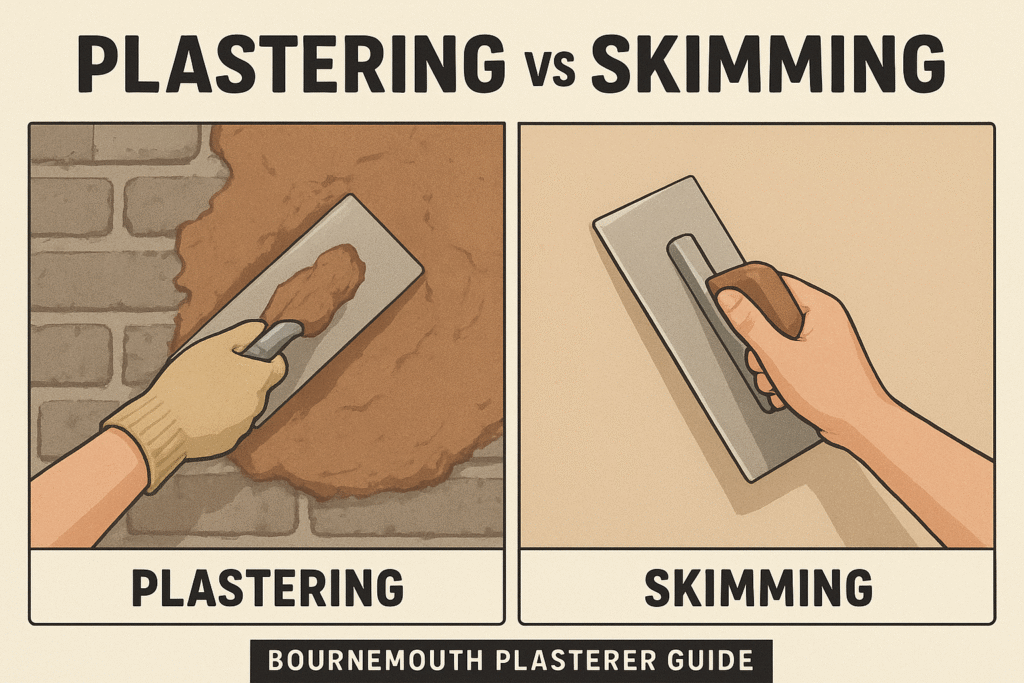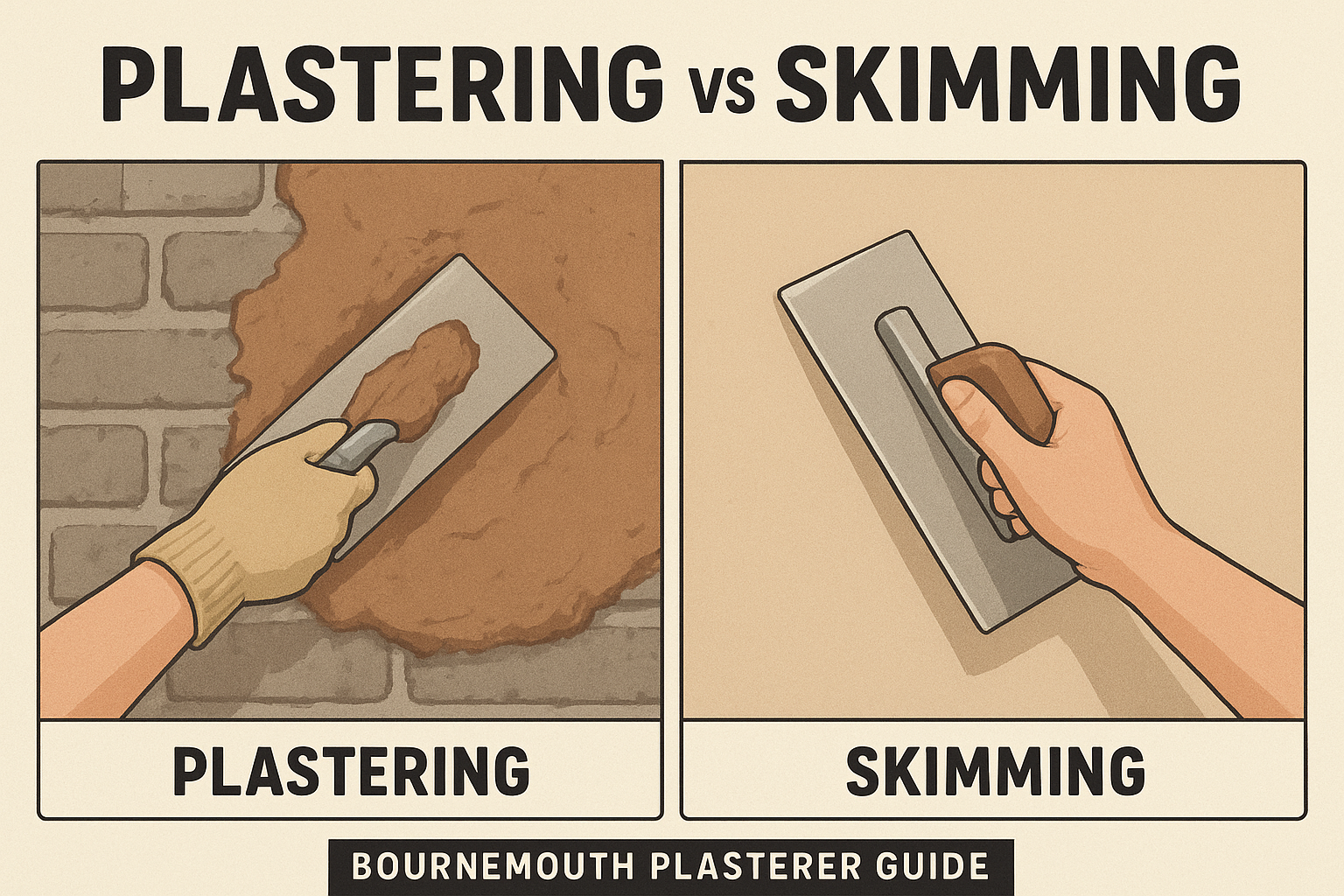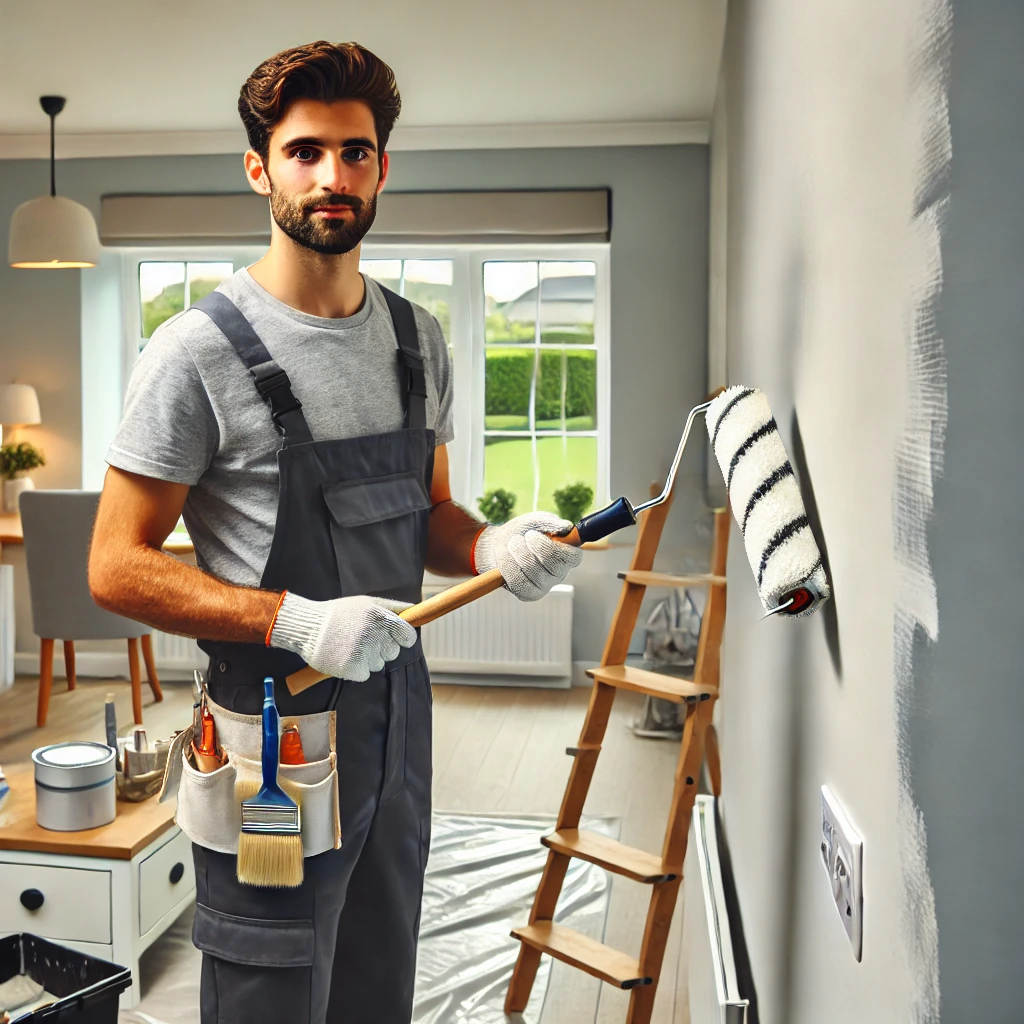When you’re planning to refresh your home, one of the most common questions is:
“Do I need plastering or skimming?”
At first glance, they sound similar. Both involve plaster. Both result in smooth walls. But the process, the cost, and the final result are very different.
As a professional plasterer based in Bournemouth, I’ve worked on everything from Victorian terraces in Southbourne to new-builds in Poole. In this guide, I’ll explain the real difference between plastering and skimming, when to use each one, and how to make the right choice for your home.
What Is Plastering?
Plastering is the process of applying plaster to bare walls or ceilings to create a brand-new surface.
- When it’s needed:
- On new builds where the walls are just bare blockwork or plasterboard.
- In older Bournemouth homes where existing plaster is crumbling or has fallen away.
- After major renovations, extensions, or damp repairs.
- Thickness & materials:
Plastering typically involves applying multiple coats — usually a base coat (sometimes called bonding or undercoat plaster) followed by a finishing coat. The layers can be much thicker than skimming. - The result:
Strong, durable walls that are ready to paint, wallpaper, or tile.
Think of plastering as building the entire wall surface from the ground up.
What Is Skimming?
Skimming, on the other hand, is a finishing technique. Instead of starting from scratch, it’s about improving what’s already there.
- When it’s needed:
- When existing plaster is solid but looks tired, uneven, or cracked.
- If you’ve removed old wallpaper and the walls underneath are rough.
- To cover up imperfections in plasterboard joints.
- Thickness & materials:
A skim coat is much thinner than full plastering — usually around 2–3mm — but it requires skill to apply smoothly. - The result:
A glass-like, smooth finish that decorators love because it’s perfect for paint or wallpaper.
Skimming is essentially giving your walls a facelift without the mess and cost of completely replastering.
Key Differences Between Plastering and Skimming
Here’s a quick side-by-side breakdown:
| Feature | Plastering | Skimming |
|---|---|---|
| Purpose | Creates a brand-new surface on bare walls or ceilings | Smooths and refreshes existing plaster |
| Thickness | Multiple coats, several millimetres thick | Very thin, 2–3mm |
| Time & Cost | More labour-intensive, usually higher cost | Faster and more cost-effective |
| Best For | New builds, major renovations, damaged walls | Cosmetic upgrades, minor imperfections |
Which Is Right for Your Bournemouth Home?
Here’s how to decide:
- Choose plastering if your walls are in poor condition — crumbling, damp-damaged, or bare. This gives you a strong, long-lasting base.
- Choose skimming if your walls are solid but just unattractive. It’s quicker, cheaper, and gives that fresh, modern look.
Many Bournemouth homeowners with 1930s or post-war properties often benefit from skimming because the walls are structurally sound but have outdated finishes. For coastal properties, where salt and damp sometimes cause deeper damage, full plastering might be the better investment.
Why Local Expertise Matters
As a Bournemouth plasterer, I understand the quirks of local housing:
- Victorian terraces in Boscombe often need full plastering due to age and damp issues.
- Modern flats in Bournemouth town centre usually just need skimming for a fresh, smooth finish.
- Family homes in Southbourne or Christchurch often benefit from a mix of both — plastering damaged areas, then skimming to blend everything seamlessly.
Hiring local means faster turnaround, honest pricing, and the reassurance of a trusted tradesman with a reputation to uphold.
Final Thoughts
Plastering and skimming might sound similar, but they’re two very different services.
- Plastering = building the surface.
- Skimming = perfecting the surface.
Both play a vital role in getting that flawless finish every homeowner wants.
If you’re in Bournemouth, Poole, or Christchurch and unsure which option you need, I offer free advice and no-obligation quotes. Together, we’ll find the right solution for your home — whether that’s a full plastering job or a simple skim coat.
Ready to transform your walls? Contact me today for a local, friendly, and professional service.


